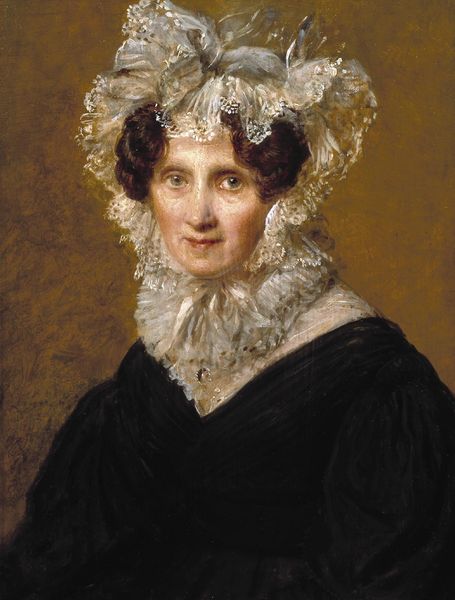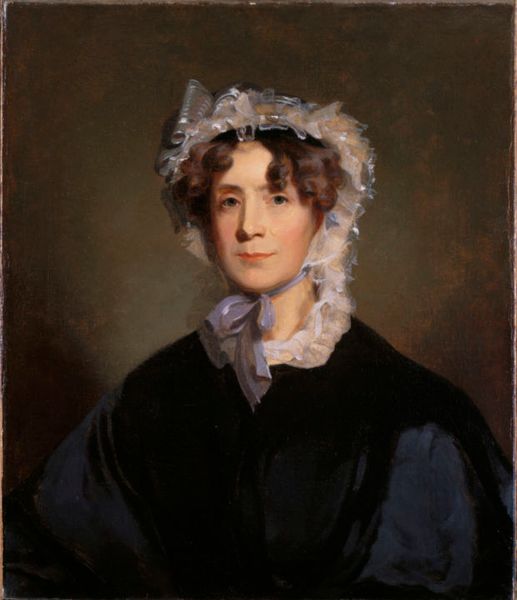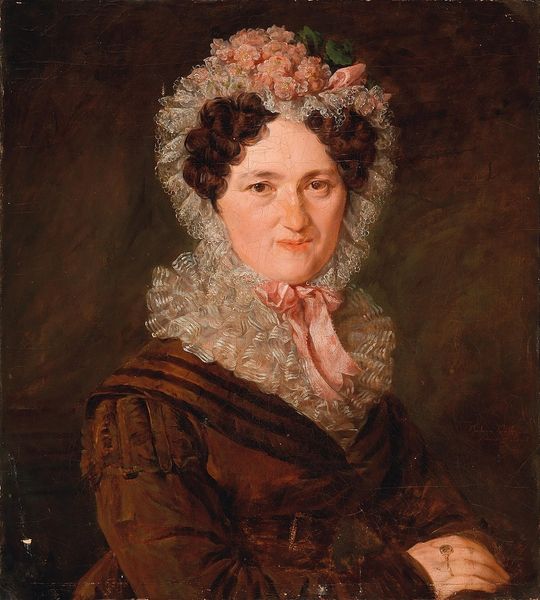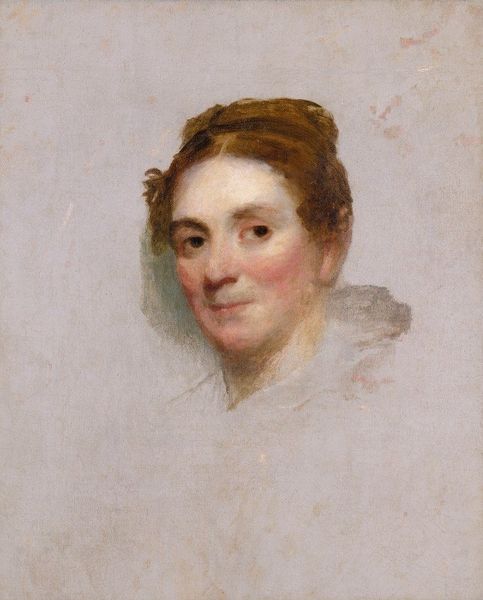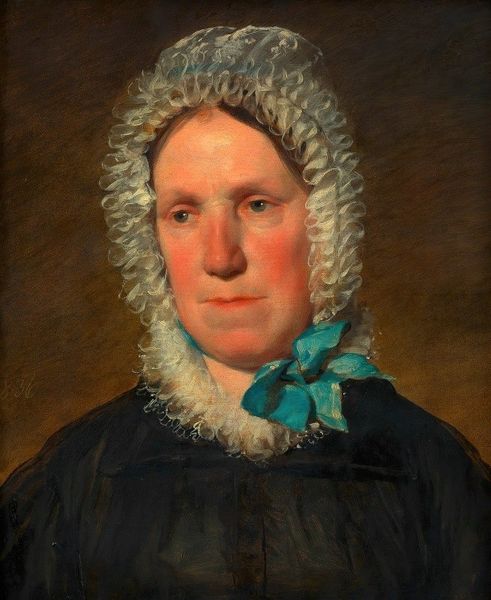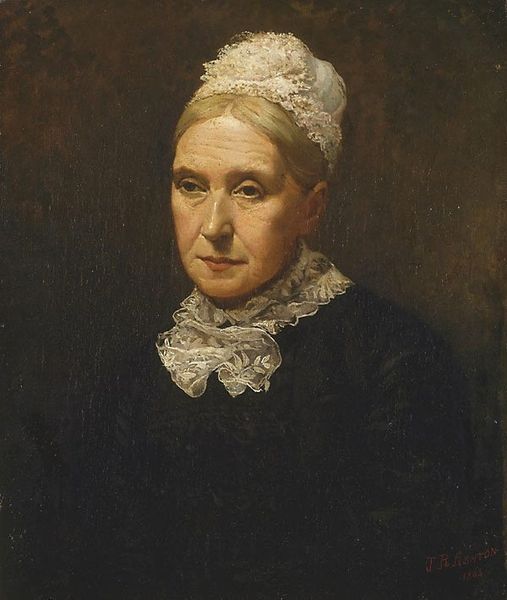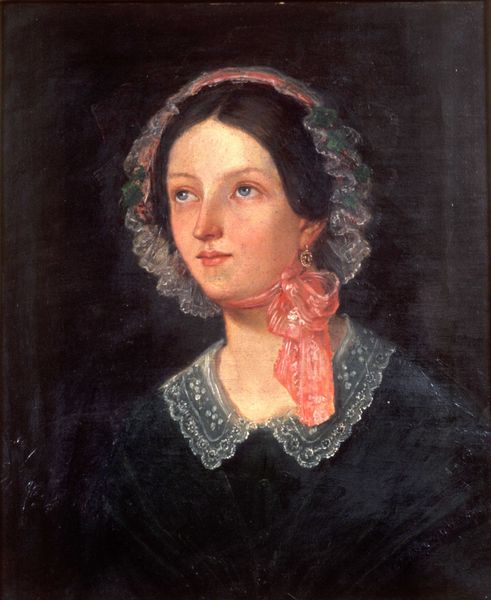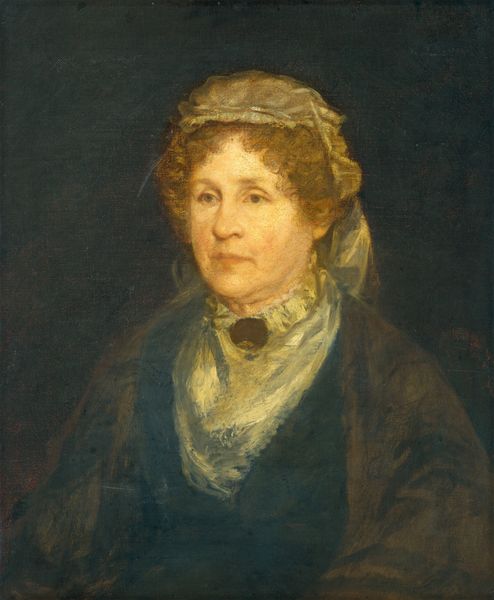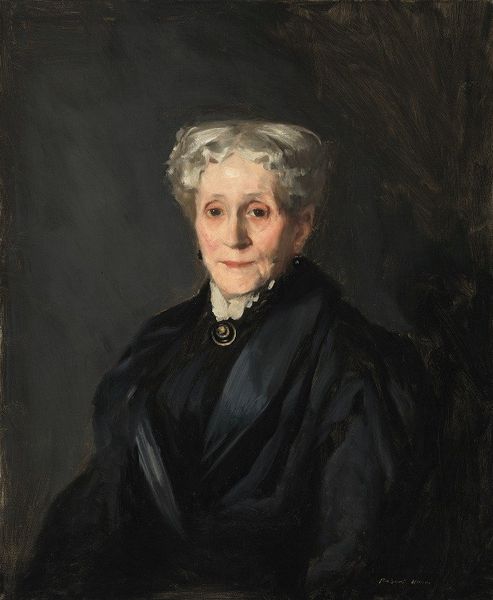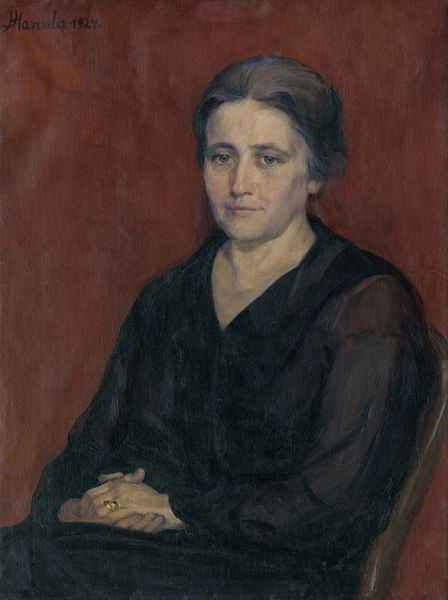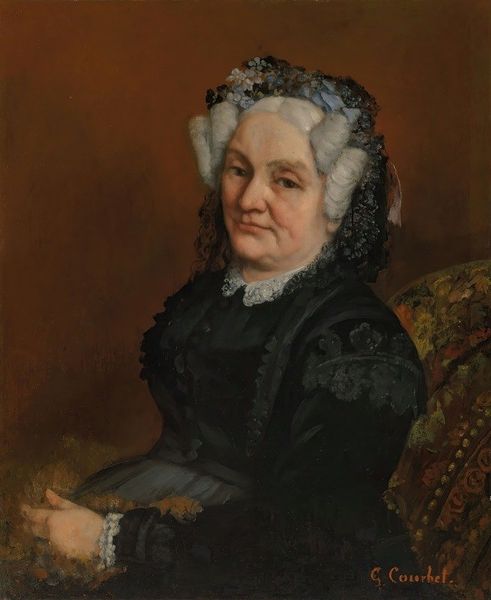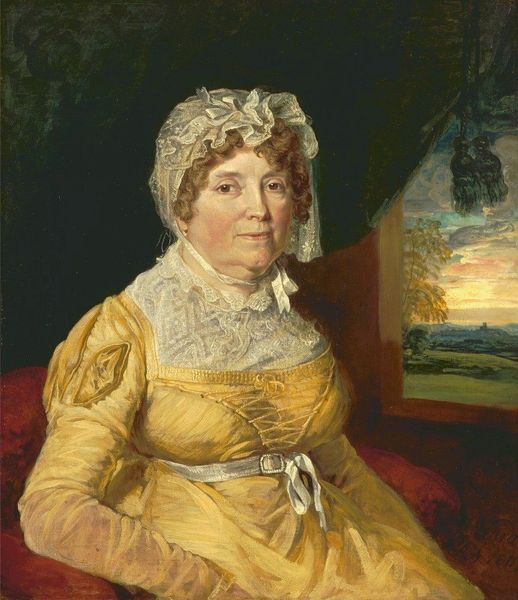
painting, oil-paint
#
portrait
#
self-portrait
#
painting
#
oil-paint
#
oil painting
#
romanticism
#
genre-painting
Copyright: Public Domain: Artvee
Curator: The painting before us is entitled "Theresia Amerling, Mutter des Künstlers" – or "Theresia Amerling, Mother of the Artist" – executed in 1836 by Friedrich von Amerling, using oil paints. Editor: Oh, she looks incredibly wise and patient. I imagine that the artist greatly admired his mother’s strength! Her slightly downturned eyes create an air of introspection. Curator: The composition indeed reinforces that perception. Note the muted palette, which speaks to Romanticism’s emphasis on feeling and emotional depth, favoring softer tones over vibrant color clashes. Amerling is also employing subtle brushstrokes that soften the edges, lending the subject an almost ethereal quality. Editor: I love how her lace bonnet frames her face like a halo, though it might also subtly signify that she lived a life within boundaries. She may not have wandered into the outside world as freely as a man would have at the time, even though her face tells of vast experiences. Curator: That element, along with the subdued tones of the clothing, anchors her to the domestic sphere while her penetrating gaze suggests a powerful interiority that challenges that limitation. Editor: It’s so interesting how this formal pose gives us access to the domestic reality of 19th-century womanhood! And looking closely, there’s so much more complexity in her facial expression than first meets the eye – the slight furrow of her brow or a sense of weariness about her lips… Curator: Those minor variations are in line with contemporary naturalistic portraiture! Details create character. A slight adjustment transforms sentiment. We see in Amerling’s attention not only skillful mimesis but also an emotional awareness. Editor: Exactly. There’s incredible softness, a tender portrayal by a loving son perhaps. Ultimately, seeing her this way evokes a reflection on the importance of familial bonds and hidden sacrifices. Curator: Precisely. As a historical object and as a document of familial devotion. A potent intersection.
Comments
No comments
Be the first to comment and join the conversation on the ultimate creative platform.
